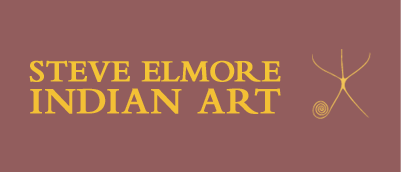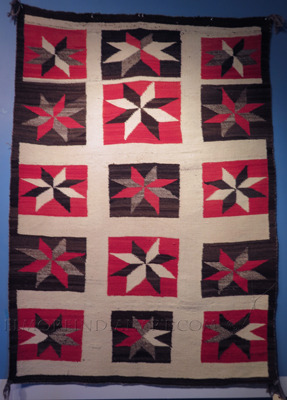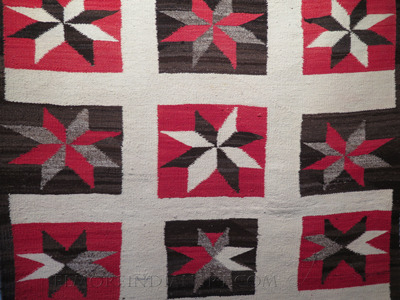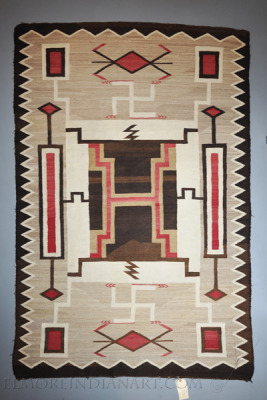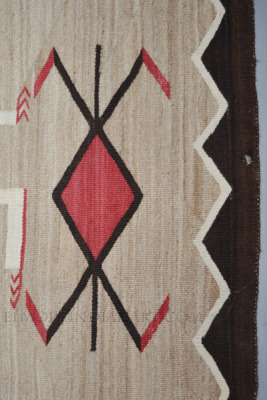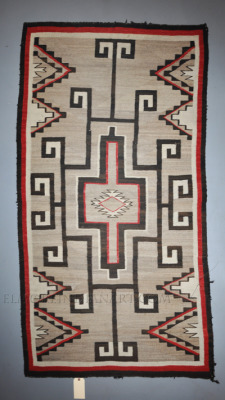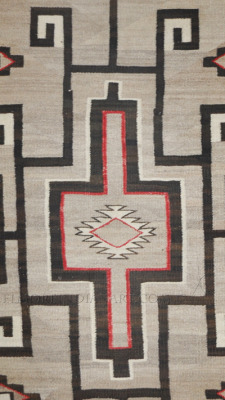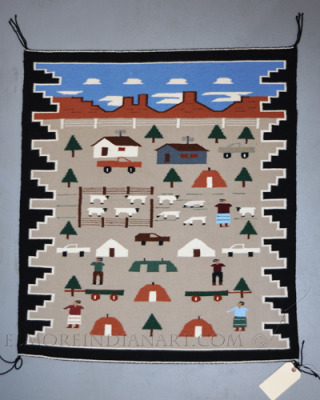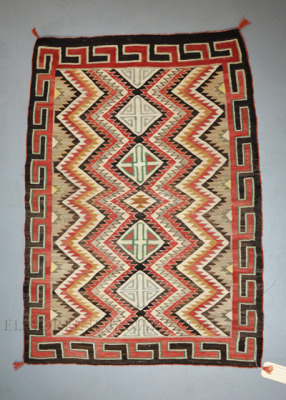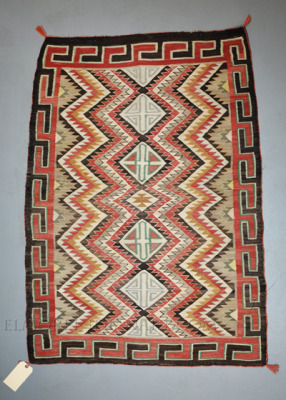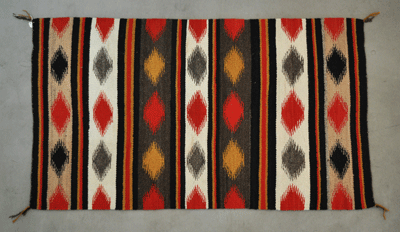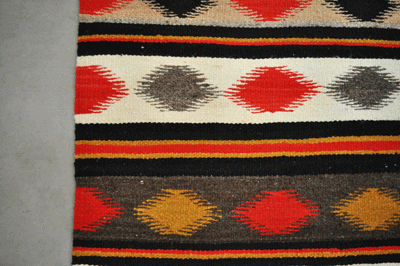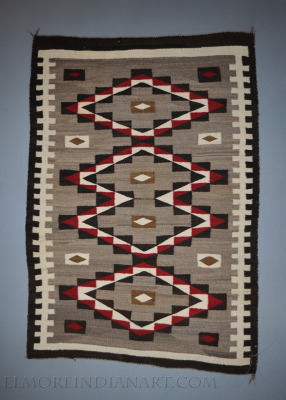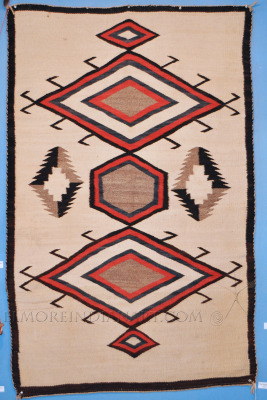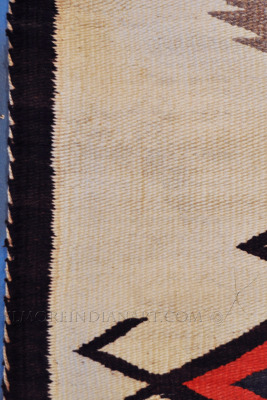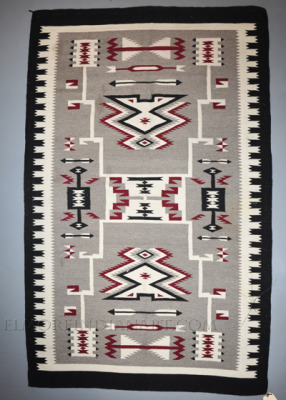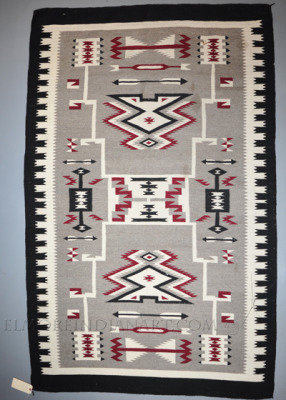Navajo & Pueblo Textiles
Navajo & Pueblo Textiles
In the prehistoric period, all weavings were made of cotton. With the arrival of the Spanish in the 16th century, wool became available. Originally weavers worked in natural whites tans and browns and indigo dye. Later, commercial yarns were introduced by Anglo traders. In Pueblo culture men are the weavers. Among the items woven were banded blankets, twill weave mantas and dresses and cotton mantas without embroidery. Also, belts, embroidered sashes and rain sashes. All woven pieces were made for utilitarian and ethnographic use.
By the mid 19th century the Navajo learned to use upright looms from Pueblo weavers. The Navajo worked specifically in wool from sheep obtained by the Spanish. Their woven pieces were mainly blankets and saddle blankets which were also valuable trade items. After 1853 other items were produced. Navajo weavings traditionally used natural dyes of white, brown, indigo, raveled red and cochineal. After the 1880's, more commercial yarns became available, but mass produced blankets by the Pendleton Company began to replace the Navajo blankets which were time consuming to weave. As blanket weaving began to die out, the traders developed a market for floor rugs woven by the Navajo women. Established traders like C.N. Cotton and J.B. Moore commissioned designs for the commercial trade, even producing mail order catalogs with photos of rugs to be ordered. Lorenzo Hubbell revived the traditional patterns and methods of the earlier blankets. Today the Navajo buy what they wear and sell their textiles, no longer weaving for their own use, but producing beautiful art for people's homes, including their own.

